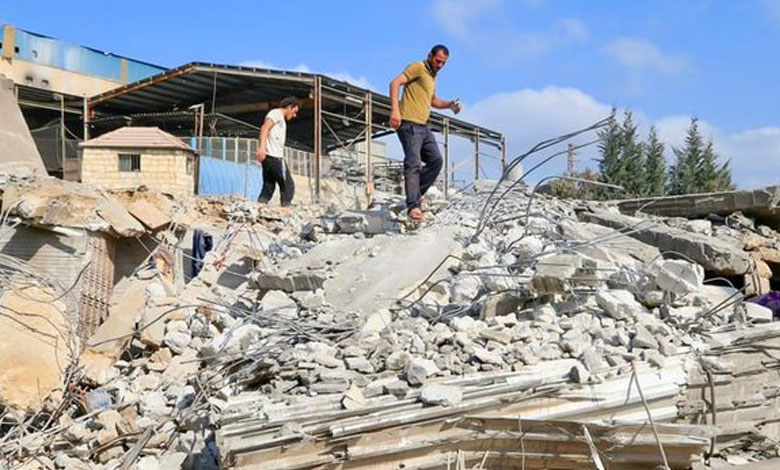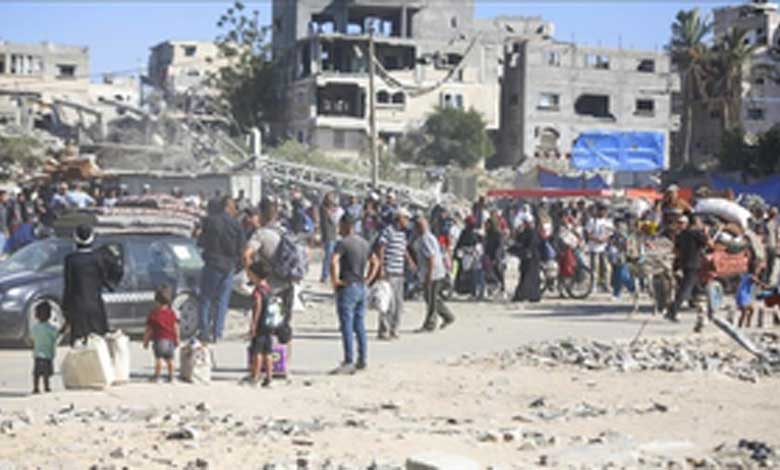Lebanese Displaced by War Seek Reconstruction Amid Slow Recovery Process
Six weeks after a ceasefire halted the recent conflict between Israel and Hezbollah, displaced Lebanese citizens whose homes were destroyed in the fighting are eager to rebuild, but the reconstruction process is moving at a slow pace.

Beirut: Six weeks after a ceasefire halted the recent conflict between Israel and Hezbollah, displaced Lebanese citizens whose homes were destroyed in the fighting are eager to rebuild, but the reconstruction process is moving at a slow pace. Large sections of southern and eastern Lebanon, as well as southern Beirut suburbs, remain in ruins, with tens of thousands of homes reduced to rubble following Israeli airstrikes.
The World Bank’s November report estimated the damage to Lebanon’s infrastructure at approximately USD 3.4 billion, a figure that does not include the final weeks of the war. In many affected areas, residents are unable to return due to the continued presence of Israeli soldiers, and there are growing doubts about the full withdrawal of Israeli forces by the ceasefire’s set deadline of January 26.
Table of Contents
Challenges to Reconstruction and Uncertain Funding
As Hezbollah, a key player in the conflict, begins to provide some compensation to victims, reconstruction prospects remain unclear. During the 2006 Israel-Hezbollah war, Hezbollah largely funded the rebuilding effort with the support of its ally Iran. However, due to Hezbollah’s losses in the latest war and Iran’s economic struggles, there is uncertainty regarding the financial and logistical resources for this new wave of reconstruction.
The Lebanese government, struggling with severe economic challenges and a lack of funding, has limited capacity to assist in reconstruction efforts. The country’s financial system remains paralyzed, and international donors are already stretched thin due to the ongoing crises in Gaza and Syria.

Hezbollah’s Role in Compensation
In the meantime, Hezbollah has begun compensating families for damage to their homes, although the amounts provided have been far less than the actual cost of repairs for many families. Manal, a mother of four from the southern village of Marjayoun, has been displaced for over a year and has yet to receive any compensation, while Mohammad from southern Beirut shared that his family received a partial payout of USD 2,500, which covered only a fraction of their damage.
Also Read: Trump’s New Policies Could Reshape America: How Will Your State Respond?
Despite some discontent over the compensation process, others, like Abdallah Skaiki from southern Beirut, reported receiving more substantial payments of up to USD 14,000 from Hezbollah’s linked microfinance institution, Qard Al-Hasan.
International Assistance and Government’s Role
The Lebanese government has appealed for international aid, working with the World Bank to conduct a more detailed damage assessment. Plans to establish a multi-donor trust fund for reconstruction are in the works, but no concrete plans have yet been finalized. The World Bank is also exploring emergency projects to provide targeted assistance to the hardest-hit areas.
In the midst of this uncertainty, Hezbollah has mobilized over 145 reconstruction teams and deployed hundreds of engineers and data analysts to survey and assess the damage. However, as Jana, an architect volunteering with Hezbollah’s efforts in Nabatiyeh, pointed out, there is no clear plan or funding for full-scale reconstruction as of yet.
Lebanon’s Long Road to Recovery
While Hezbollah has taken the lead in providing financial aid and starting repairs, the future of reconstruction remains dependent on both the local political situation and the availability of international aid. With Lebanon’s government facing financial constraints and the international community already stretched thin by multiple crises in the region, the rebuilding of the country is likely to take years, with many families still awaiting the compensation they were promised.

